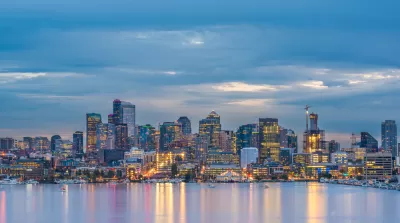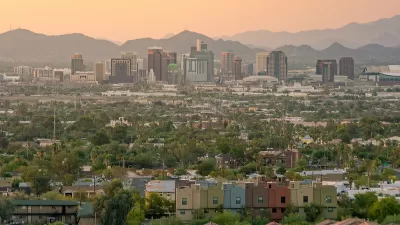Views about urban growth and decline often rely on statistics for metropolitan regions rather than cities proper. Here, Richard Florida looks at the fastest- and slowest-growing cities in America, separate from their metro areas.

When it comes to narratives about coastal superstar cities and a rising Sunbelt, "the reality is that most studies that purport to talk about cities are really talking about the performance of broader metropolitan areas," Richard Florida writes. A focus on cities themselves reveals uneven patterns of urban revitalization, where some are experiencing heady growth while others "continue to struggle and lose ground, whether to other cities or their own suburbs."
For the first of a four-part series, Florida worked with a team of researchers to examine America's 50 largest "core or principal cities" through the lenses of population and employment growth over the years 2012 through 2017.
In terms of population, the narrative of a burgeoning Sunbelt and a declining Frost Belt appears to hold. "However, the most rapidly growing large cities are not sprawling, unregulated Sunbelt ones (such as Houston), but two relatively expensive tech hubs, anchored by leading research universities—Seattle and Austin."
Employment patterns match the narrative of Sunbelt ascent even better, with the list of fastest-growing job markets in cities mirroring the list for metros. For both population and employment growth, "superstar" cities like New York, Los Angeles, and San Francisco rank only average.
FULL STORY: The Fastest-Growing U.S. Cities Aren’t What You Think

Alabama: Trump Terminates Settlements for Black Communities Harmed By Raw Sewage
Trump deemed the landmark civil rights agreement “illegal DEI and environmental justice policy.”

Planetizen Federal Action Tracker
A weekly monitor of how Trump’s orders and actions are impacting planners and planning in America.

How Atlanta Built 7,000 Housing Units in 3 Years
The city’s comprehensive, neighborhood-focused housing strategy focuses on identifying properties and land that can be repurposed for housing and encouraging development in underserved neighborhoods.

In Both Crashes and Crime, Public Transportation is Far Safer than Driving
Contrary to popular assumptions, public transportation has far lower crash and crime rates than automobile travel. For safer communities, improve and encourage transit travel.

Report: Zoning Reforms Should Complement Nashville’s Ambitious Transit Plan
Without reform, restrictive zoning codes will limit the impact of the city’s planned transit expansion and could exclude some of the residents who depend on transit the most.

Judge Orders Release of Frozen IRA, IIJA Funding
The decision is a victory for environmental groups who charged that freezing funds for critical infrastructure and disaster response programs caused “real and irreparable harm” to communities.
Urban Design for Planners 1: Software Tools
This six-course series explores essential urban design concepts using open source software and equips planners with the tools they need to participate fully in the urban design process.
Planning for Universal Design
Learn the tools for implementing Universal Design in planning regulations.
Caltrans
Smith Gee Studio
Institute for Housing and Urban Development Studies (IHS)
City of Grandview
Harvard GSD Executive Education
Toledo-Lucas County Plan Commissions
Salt Lake City
NYU Wagner Graduate School of Public Service




























